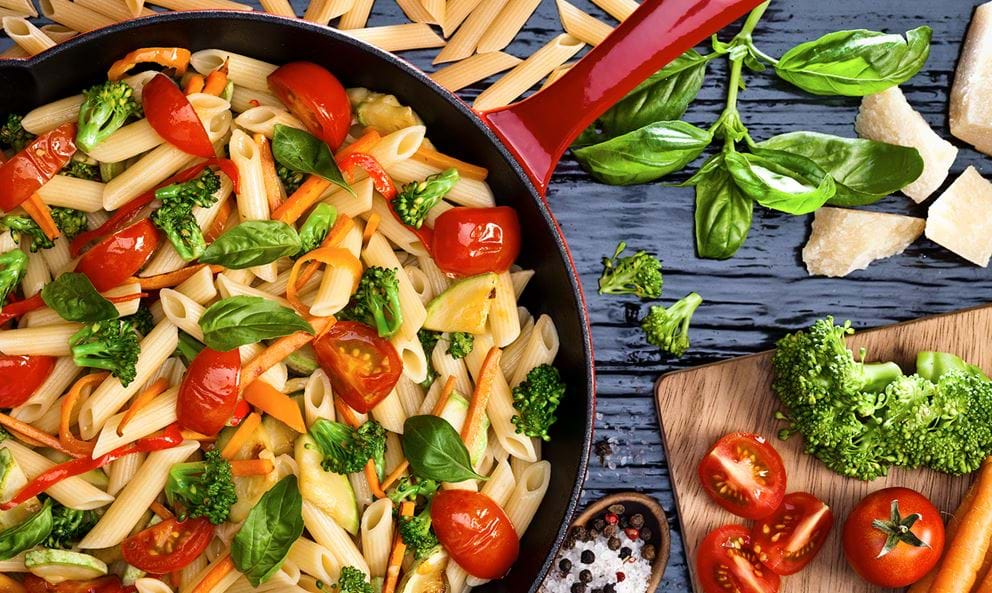The Pasta Dilemma: Friend or Foe?

Pasta, though undeniably delicious, tends to get a pretty bad rap with today’s fitness crowd. It tends to be particularly unpopular with serious dieters who want to stay trim all-year around, and are convinced that pasta will cause them to balloon out of control.
It’s not the most shocking assumption. After all, pasta dishes are notoriously heavy, often extremely filling, and sometimes seem almost uniquely capable of inducing the notorious ‘food coma’.
But when all is said and done, what’s the truth about this Italian wonder-dish? Is pasta friend or foe?
Pasta isn’t as high GI as you thought
The glycaemic index (GI) is a well-known measure of how quickly a food spikes a person’s blood sugar. The lower the GI score of a food, the healthier it’s generally judged to be, and the less likely to promote weight gain or insulin-related disorders, including Type 2 Diabetes.
Pasta, as it so happens, is actually a pretty low-GI food.
In fact, according to a chart from Harvard University, white spaghetti has a GI score of around 46, while the wholegrain variety has a GI score of around 42.1 Other types of pasta score even lower, with fettuccini landing at 32.
By contrast, the same chart puts the GI score of boiled white rice at 72, and the score of whole wheat bread at 69.
It seems that contrary to popular belief, pasta isn’t more likely than most other carb-sources to result in blood sugar spikes, in and of itself.
Pasta is really high in carbs
While pasta may have a surprisingly low GI score, it is very carb heavy. The USDA reports that 100g of spaghetti contains around 31g of carbs2, while 100g of potato contains only 17g3.
This, combined with the fact that pasta is often the base of various dishes and is consumed in large quantities, introduces a few issues.
For one, it means that pasta can potentially carry a very high glycaemic load (GL) score — or in other words - even if it doesn’t spike blood sugar very quickly, it can still result in a dramatic spike overall.
For another thing, the high carb content of pasta, and the traditionally large portion sizes, means there’s an elevated risk of overeating.
High-calorie, high-carb meals are bound to have negative implications for dieters if they exceed macro and calorie goals. They’re also much more likely to cause fatigue, which can be a particularly annoying issue when it strikes just before a gym session.
Finally, anyone adhering to a very low carb or ketogenic diet will want to avoid pasta for obvious reasons.
Whole grains in pasta may improve your metabolism
Pasta, specifically the whole-wheat varieties, are known to be a great source of whole grains. While much has been said about the positive health effects of whole grains for years now, new findings from 2017 suggest that they might also boost metabolism and increase calorie loss.4
In other words, pasta may be more of a friend to conventional dieters than they’ve feared, as it could cause the body to burn more calories at rest and during digestion than otherwise.
The key to enjoying this benefit, and having it aid your weight-loss efforts, is to ensure that you practice good portion control, and track your calories and macros.
1 https://www.health.harvard.edu/diseases-and-conditions/glycemic-index-and-glycemic-load-for-100-foods
2 https://ndb.nal.usda.gov/ndb/foods/show/6611?fgcd=&manu=&lfacet=&format=&count=&max=50&offset=&sort=default&order=asc&qlookup=20421&ds=&qt=&qp=&qa=&qn=&q=&ing=
3 https://ndb.nal.usda.gov/ndb/foods/show/3080?fgcd=&manu=&lfacet=&format=&count=&max=50&offset=&sort=default&order=asc&qlookup=11352&ds=&qt=&qp=&qa=&qn=&q=&ing=
4 http://now.tufts.edu/news-releases/new-study-suggests-eating-whole-grains-increases-metabolism-and-calorie-loss


